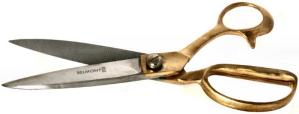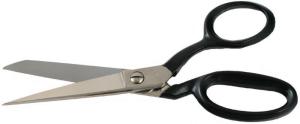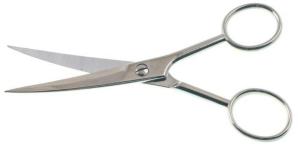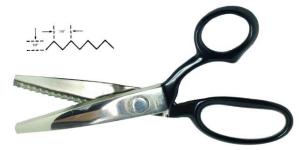Fabric Scissors vs. Regular Scissors
Scissors are a helpful tool for a variety of uses, both domestic and industrial. While a regular pair of scissors can perform cutting in a broad range of items and materials, fabric scissors are a specific type of scissors designed especially for cutting fabric. Vital to a sewer’s toolkit, fabric scissors come in several different types to perform specialized cutting functions. Fabric scissors primarily differ from regular scissors in shape and material construction and must not be used for any operation other than cutting fabric. Understand the important differences between fabric scissors vs. regular scissors.
Fabric Scissors are an Essential Sewing Implement
When working with fabrics, fabric scissors are key to delivering a high-quality product. Various types of fabric scissors are available that are individualized to perform specific functions depending on the characteristics, like:- Tailor’s scissors are a heavy-duty design, ideal for a variety of cloth materials, including leather.

- Dressmaker’s scissors utilize a tapered long blade with one pointed and one rounded blade tip to provide additional precision.

- Embroidery scissors have sharp points and single-finger loops made from hot-drop forged steel with nickel plating.

- Pinking shears feature a serrated blade that creates a zig-zag pattern to limit the length of frayed thread and fabric damage on unfinished cloth edges.
-

Only designed for cutting fabric, fabric scissors should not be used for other cutting operations. The blade material on fabric scissors is crafted from high carbon, hot drop-forged steel. This steel material holds the sharpness of the edge longer, is more easily sharpened and honed, and an all-steel construction provides an exceptionally long life, but using fabric scissors for other materials may shorten the span of their use. Other materials, like paper that uses a clay substrate, may be damaging over periods of time, dulling fabric scissors faster than if they were only used for fabric cutting.
Specifications for Fabric Scissors from Diamond Needle
With an array of options for fabric scissors, offerings from Diamond Needle can meet your advanced fabric cutting needs. Our dressmaker’s scissors and tailoring shears are also available in a “bent handle” design that allows the bottom blade to lie on the table for smooth cutting with ergonomic ease. This design offers a comfortable finger ring for the thumb and an extended ring for two or three fingers, providing more cutting power with less effort or discomfort. Straight handle scissors with the same finger loop design are also available, offering a solution for cutting materials held off a surface.Diamond Needle offers embroidery scissors in three types: straight with double sharp points for fine thread cutting, curved blade applique scissors with fine-shaped points that are curved to minimize accidental damage to the fabric when trimming delicate materials, and duckbill applique scissors with one flat edge to hold down fabric while the other blade with a sharp point trims.
When to Use Regular Scissors in Sewing Applications
All-purpose scissors are excellent for a wide range of cutting operations, although they most likely will not provide high-quality cuts in fabric projects. Regular scissors are machine-made, multipurpose cutting tools, and while they can be used to cut fabric, the design and material composition of regular scissors will struggle to provide a clean cut in fabric materials. However, regular scissors are still helpful in sewing projects. For sewing applications, all-purpose scissors can be utilized for patternmaking and other design functions involving paper materials or cutting apparel furnishings not made of fabric.Differences of Fabric Scissors vs. Regular Scissors
When comparing fabric scissors and general, all-purpose scissors, the main differences exist in the material composition and engineer design. Regular scissors are manufactured by machines, while fabric scissors are handcrafted and specially engineered for a specific purpose.One way to tell the difference between fabric scissors vs. regular scissors is the material they are made with; fabric scissors' blades utilize special carbon steel alloys that deliver precision cuts, and blades for regular scissors are made of stainless steel to provide general cutting in many materials and a long lifespan. Another way to distinguish fabric scissors from regular scissors is their shape. Fabric scissors feature a longer, sharper blade with a steeper angle and larger, more ergonomic handles, providing user comfort while delivering quality and efficiency in fabric cutting.






